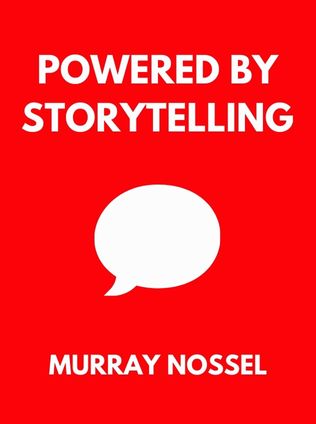
Powered by Storytelling
Excavate, Craft and Present Stories to Transform Business Communication
By Murray Nossel
Published 04/2018
About the Author
Murray Nossel, Ph.D., is the founder and director of Narativ. With over 25 years of experience in storytelling, he has taught more than 10,000 people in over 50 countries. He is also a faculty member of the Program of Narrative Medicine at Columbia University College of Physicians and Surgeons. Through Narativ, Nossel has collaborated with diverse corporations such as the Walt Disney Company, Time Warner, New York Habitat, UNICEF, Radisson Hotels, and Twitter. His profound expertise in storytelling is distilled in his book "Powered by Storytelling: Excavate, Craft and Present Stories to Transform Business Communication."
Main Idea
"Powered by Storytelling" reveals the transformative power of storytelling in business communication. Nossel introduces a methodical approach to storytelling, which he terms the Narativ method, emphasizing the importance of connecting with an audience through personal stories. This method is broken down into three main phases: excavating, crafting, and presenting stories. By mastering these phases, individuals can enhance their communication skills, foster deeper connections, and achieve professional success.
Table of Contents
- Introduction
- Principles of the Narativ Method
- Why Story? Why Now?
- Identify and Release Obstacles to Listening
- Guidelines for Creating a Dedicated Time and Space
- The Grandparent Exercise
- The What Happened? Method
- Delivering a Wow Moment
- Finding Your Ending
- Connect with Your Audience
Introduction
Nossel begins with a captivating analogy involving Tibetan Buddhist monks and their traditional tale, "The Lion’s Gaze." This tale emphasizes the importance of focus in storytelling, comparing the intense concentration of a lion to the distracted chasing of a dog. Nossel asserts that effective communication in business hinges on this lion-like focus, where the primary aim is to connect deeply with the audience.
Principles of the Narativ Method
Humans are Hardwired for Story
Storytelling is an intrinsic part of the human experience, helping us make sense of our lives and create coherence from chaos. The brain organizes most of our experiences and knowledge as stories, and engaging in storytelling strengthens neural connections.
Everyone Has a Story
Regardless of one’s perception of their own story’s importance, everyone has experiences that can be transformed into compelling narratives. The key lies in excavating these events effectively.
Everyone Can Learn to Tell Their Story Better
Storytelling skills improve with practice and adherence to the "What happened?" method, which Nossel champions as a way to make significant leaps in storytelling ability.
Everyone’s Story Will Evolve
Stories naturally evolve, reflecting the dynamic relationship between listening and telling. This evolution keeps storytelling fresh and engaging.
Storytelling is Access to Creativity
Storytelling is a democratic form of creativity accessible to all. By paying attention to specific details, individuals can continually create something new and engaging.
The Reciprocal Relationship Between Listening and Telling
Effective storytelling requires a reciprocal relationship where listening and telling influence each other. This dynamic is central to the Narativ method.
Why Story? Why Now?
Nossel emphasizes the importance of asking why a story is being told and why at this specific moment. This introspection helps in understanding the rationale for storytelling and enhances the focus of the narrative effort.
"Why are you choosing to tell a story out of the many different ways human beings communicate? And why now? Why is this the moment to tell your story?" - Murray Nossel
The answers to these questions often reveal underlying themes and purposes such as demonstrating leadership, explaining a company’s purpose, increasing collaboration, generating empathy, inspiring change, resolving conflict, humanizing issues, sharing knowledge, and celebrating culture.
Identify and Release Obstacles to Listening
Successful storytelling requires a keen awareness of the obstacles to listening. Nossel identifies five categories of obstacles:
Sign up for FREE and get access to 1,400+ books summaries.
You May Also Like
The Subtle Art of Not Giving a F*ck
A Counterintuitive Approach to Living a Good Life
By Mark MansonRich Dad Poor Dad
What the Rich Teach Their Kids About Money - That the Poor and Middle Class Do Not!
By Robert T. KiyosakiHow To Win Friends and Influence People
The All-Time Classic Manual Of People Skills
By Dale CarnegieQuiet: The Power of Introverts
The Power of Introverts in a World That Can't Stop Talking
By Susan Cain



















